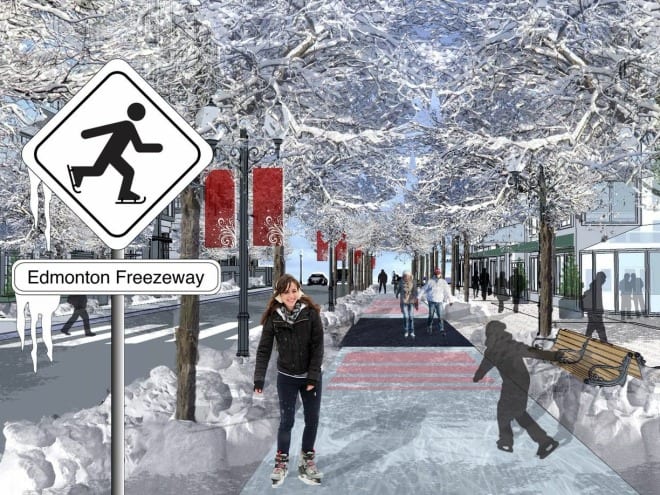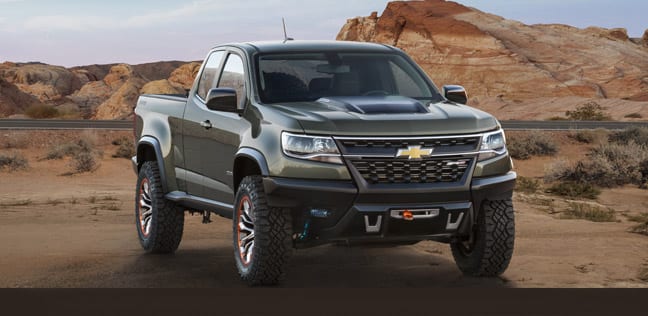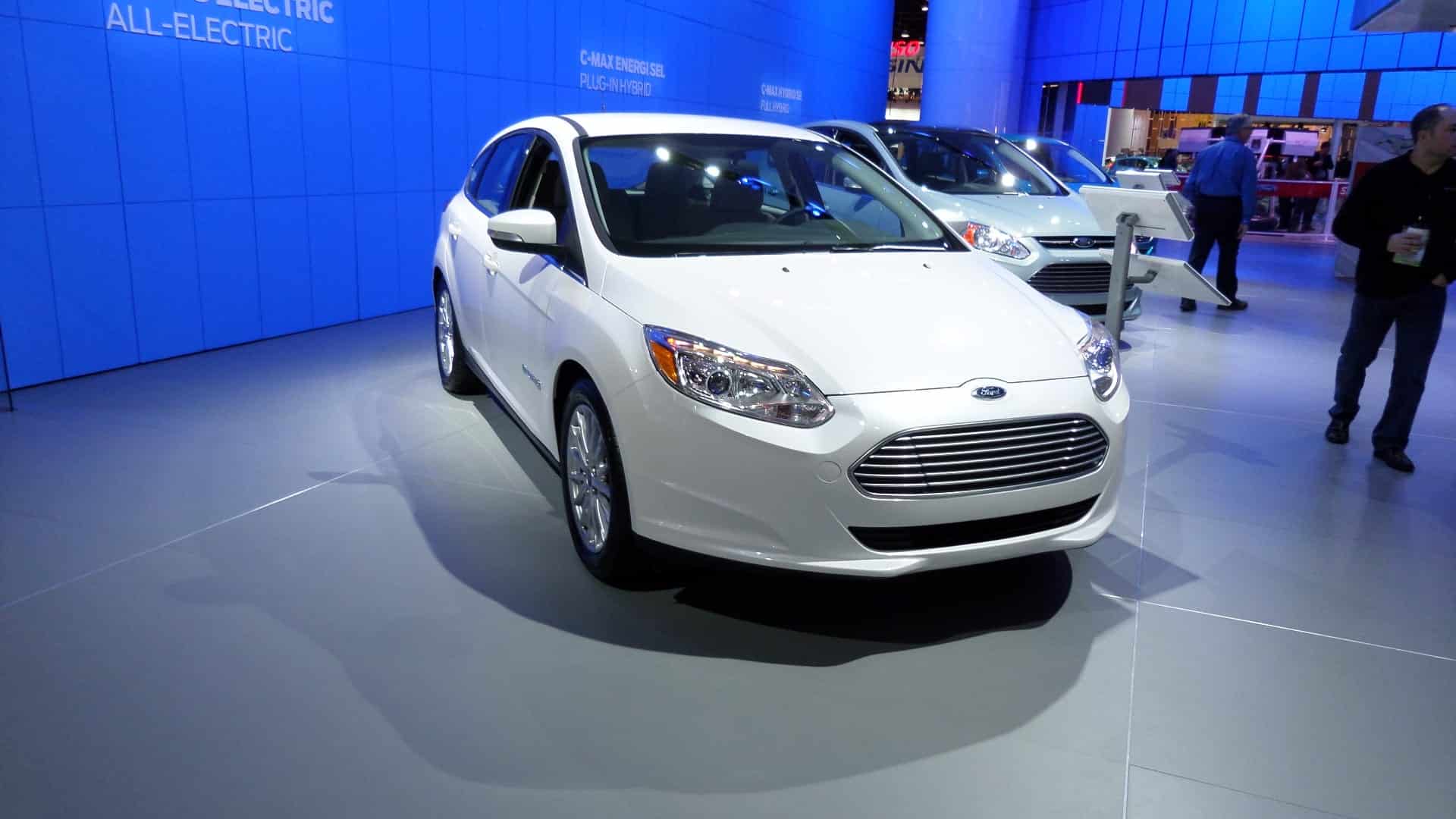You may soon be able to ice skate for your daily commute in Edmonton, as the city is considering a ‘Freezeway’ — a paved ice pathway. The pathway, proposed by Matt Gibbs is 11 km (6.8 miles). The Freezeway would run along a loop through downtown Edmonton using an abandoned railway.
As Chris DeMorro put it:
‘The Freezeway would go along two existing transportation corridors in a loop around downtown Edmonton, utilizing in-part an abandoned rail right-of-way. Naturally the new Freezeway would run right up to the door of the brand new Edmonton Oiler’s stadium. Low curbs and snow banks would allow water to freeze and gently guide pedestrians along a pre-prescribed path.’
What’s The Point?
It is fun! This is a potentially cheap, low-tech, zero-emissions car alternative (provided that they don’t use refrigerators to keep it frozen year-round) that people might actually want to use. Not to say that bikes aren’t fun too, but the use of vehicles in general is sometimes a slippery process during winter. Ice skates are designed for ice. Those who are willing to learn how to skate and give it a try can do it, while everyone else can use whichever other transportation option they please. A diverse set of transportation options is a good thing!
The lack of diverse transportation lanes/pathways leads to the chaos you see on some roads. i.e. motorcyclists, cyclists, cars, and trucks colliding, pileups, etc. Having too many different types of vehicles on the same road is risky. The small vehicles can’t see in front of the large vehicles, the large vehicles need to drive slowly because they are inherently accident-prone, and drivers of large vehicles may not be able to see the drivers/riders of small vehicles around them. This is why designated lanes are needed.
According to Alex Davies from Wired:
‘The Freezeway would look like a big bike lane (and be used by cyclists during the warmer months) covered in ice. To contain the water long enough to have it freeze, you’d have low curbs or strategically placed banks of snow.’
Ice Skating Could Make Winter Less Of A Drag For Some
While I personally don’t mind the thought of going outside during winter, many people see winter as an unpleasant time of year when they have to stay inside and be bored out of their minds. Winter sports that involve skating on ice (such as hockey) are very popular in Canada, so the public may respond positively to this.
Personal Mobility Devices For (Or Adaptable To) Winter
How many personal mobility devices are equipped with technology suitable for, or adaptable to winter? I could count very few on one hand which I think could do the job, such as the Segways (due to their relatively large wheels). I think that winter would take another big step closer to becoming just another time of year, rather than a nuisance (where travel is concerned) if handling in snow and ice were a higher priority. It’s unfortunate that devices such as electric skateboards, and some bicycles are rendered useless when it snows. There are tyre technologies which enhance handling in snow. These, combined with the use of larger tyres should be helpful.
Personal mobility technology has the potential to save a tremendous amount of fuel, saving the population money and emissions. They sip less energy (if they’re electric) than your flat-screen TV (the larger models), and they also cost less than cars (at least in most cases). The maintenance cost of personal mobility devices is very low compared to that of cars, plus you can avoid insurance premiums and license/registration fees which are just as costly as gas!
Source: Gas 2.
Image obtained with thanks from Matt Gibbs.









